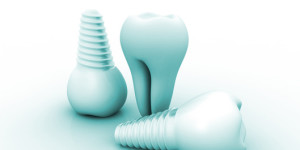 Many patients will want to pursue dental implants after having a tooth removed, and in these cases, the quality of the remaining bone in the socket will have a significant effect on the long-term success of implant placement.
Many patients will want to pursue dental implants after having a tooth removed, and in these cases, the quality of the remaining bone in the socket will have a significant effect on the long-term success of implant placement.
Unfortunately, however, some bone may be removed in conjunction with the extraction. Furthermore, bone loss often follows tooth extraction because the biological tooth’s root is no longer available to serve as an anchor for the surrounding jawbone, which wears away as a result. This phenomenon occurs more rapidly in the rear of the mouth, where the jawbone is thinner.
Because adequate bone tissue is key for the process of osseointegation, in which the bone bonds with the implant’s surface, such bone loss can present an obstacle for patients who might want to get dental implants.
Patients who know that they desire dental implants should work with the periodontist from the beginning to develop a treatment plan that incorporates both the extraction and the implant placement…
Ideally, the periodontist will be able to extract the tooth carefully in order to preserve as much bone as possible to support a dental implant that will be placed at a later time.
The timing of implant placement matters, too. Patients who know that they desire dental implants should work with the periodontist from the beginning to develop a treatment plan that incorporates both the extraction and the implant placement, with a minimal period of time passing between those two procedures.
Nonetheless, some patients may face situations that preclude the immediate placement of a dental implant after a tooth is removed. Rest assured that these patients still may be able to access this treatment even if they do experience subsequent bone loss. A bone graft, in which supplemental bone is inserted at the implant site, can help a patient successfully receive such a replacement tooth.
Specialists in periodontics can use their expertise in the gum tissue and the underlying bone structure to help patients preserve as much of their bone structure as possible following extraction and a subsequent dental implant placement. Contact our office to schedule a consultation and learn how you might benefit from our extensive knowledge in this area.


